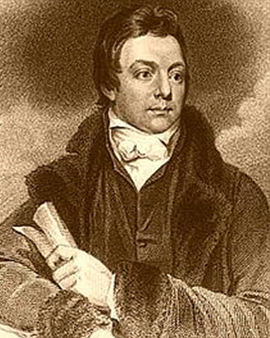Nestled in the quiet streets of Lichfield in the United Kingdom, the world welcomed a brilliant new soul on June 14, 1780 - Henry Salt. A man of remarkable versatility, he wore many hats - a gifted artist, a fearless traveler, a suave diplomat, and an accomplished Egyptologist. This harmonious combination of his talents lends a special depth and beauty to each art print of his work. Born to the respected physician Thomas Salt and his wife Alice Butt, Henry began his artistic training in his hometown before continuing it in the bustling metropolis of London. There he honed his skills under the tutelage of masters Joseph Farington and John Hoppner. Soon after, he held the position of secretary and designer for George Annesley, the Viscount Valentia - a station that was to have a major impact on his career.
Henry Salt's fascinating odyssey took him first to India, past breathtaking landscapes and unique cultures that broadened his artistic perspective and inspired him. His appetite for discovery insatiable, he then explored the Red Sea and the Ethiopian highlands, a place that provided him with a wealth of knowledge and experience. During these adventures, Salt filled his sketchbook with drawings that formed the heart of Lord Valentia's opus magnum Voyages and Travels to India (1809), a collection that still serves as a fascinating visual chronicle of his travels. His deep interest in the world brought him to Ethiopia again in 1809, this time in the service of the British government. After unraveling the complex relationships between the Tigraians and the warlord Ras Wolde Selassie, Salt returned home triumphant. He published the results of his discoveries in the revealing work, A voyage to Abyssinia, & travels into the interior of that country.
In the midst of Egypt's ancient splendor, Salt found a new home as consul general in Cairo in 1815. He made it his mission to discover and collect the country's treasures. In particular, he singled out the head of a statue of Ramses II from the Ramesseum in Luxor, which he left to the British Museum, and the sarcophagus of Ramses III, which found its way to the Louvre in Paris. Both through his own excavations and by funding others, Salt contributed significantly to the understanding of Egyptian culture, leaving a trail of art prints that captured the aesthetic of this long-gone civilization. Although he was widely recognized in his work, especially for his ability to decipher hieroglyphics, Salt was also a loving family man. He married the daughter of an Italian merchant from Livorno and fathered three daughters with her. Despite tragic losses in his family, including the deaths of his wife and newborn daughter, Salt maintained his dignity and zeal. Henry Salt passed away on October 30, 1827 in Desouk, near Alexandria, but his legacy lives on in his works, which we honor and reproduce as magnificent fine art prints. Every stroke and line tells the story of a man dedicated to art, discovery and the preservation of cultural heritage. He was a true pioneer whose influence and significance continue to this day.
×





_1809_(aqua_-_(MeisterDrucke-206939).jpg)
_1809_(aqua_-_(MeisterDrucke-206939).jpg)
.jpg)
.jpg)
.jpg)
.jpg)
.jpg)
.jpg)
.jpg)
.jpg)
_1809_(aquatint)_-_(MeisterDrucke-180980).jpg)
_1809_(aquatint)_-_(MeisterDrucke-180980).jpg)
.jpg)
.jpg)
 1817 - (MeisterDrucke-106074).jpg)
 1817 - (MeisterDrucke-106074).jpg)
.jpg)
.jpg)
.jpg)
.jpg)
_published_-_(MeisterDrucke-70712).jpg)
_published_-_(MeisterDrucke-70712).jpg)
_1809_-_(MeisterDrucke-284751).jpg)
_1809_-_(MeisterDrucke-284751).jpg)
.jpg)
.jpg)
_1809_-_(MeisterDrucke-272407).jpg)
_1809_-_(MeisterDrucke-272407).jpg)
.jpg)
.jpg)
_1809_-_(MeisterDrucke-317287).jpg)
_1809_-_(MeisterDrucke-317287).jpg)
.jpg)
.jpg)
.jpg)
.jpg)
.jpg)
.jpg)
.jpg)
.jpg)
.jpg)
.jpg)
.jpg)
.jpg)






